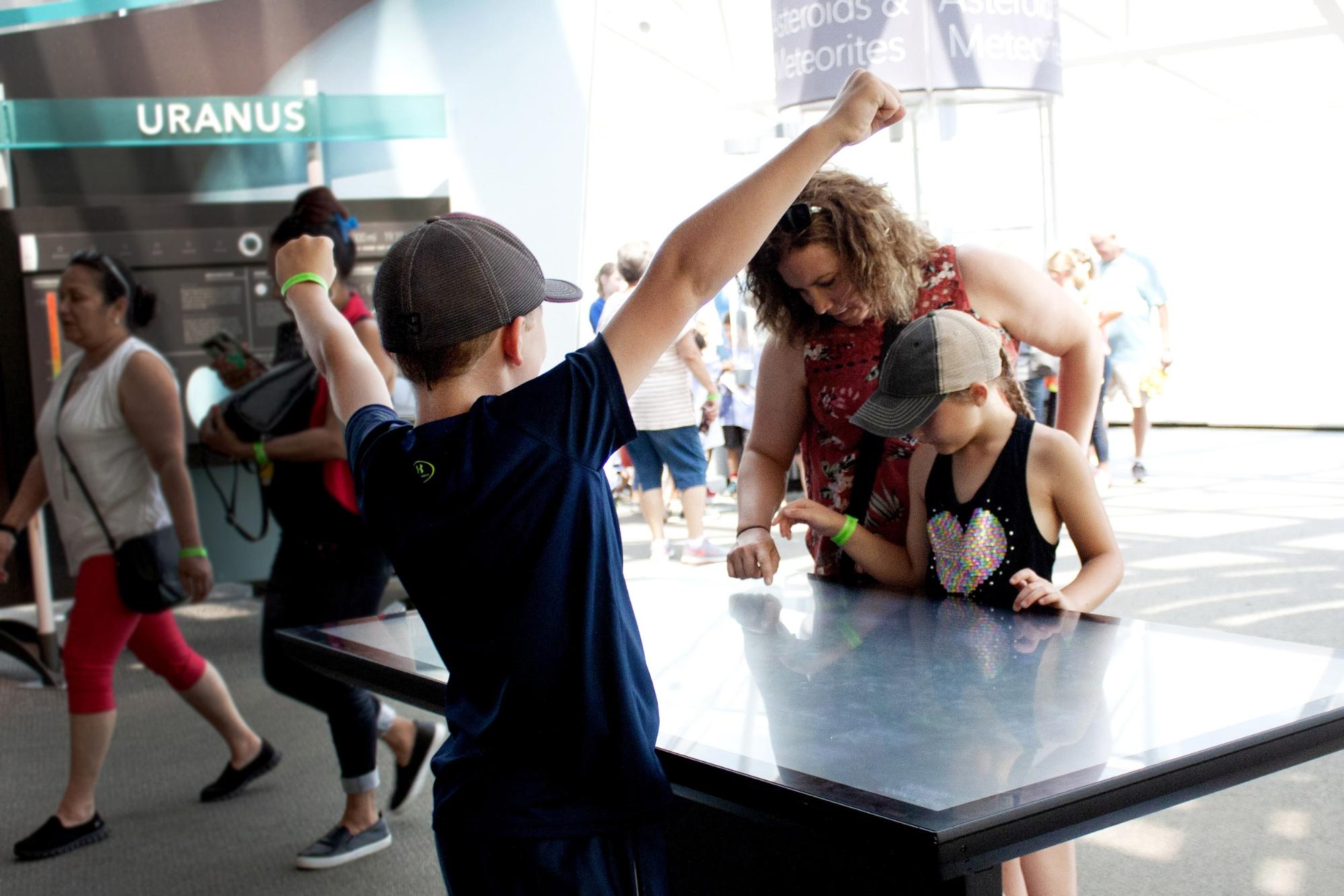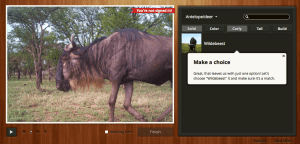“Everyone try to grab the same galaxy,” a boy exclaimed while motioning to his classmates. Around the table, six students began dragging an image of a galaxy from the center of a large touch screen onto their own workstation. It’s very likely these students are the first people to set eyes upon this galaxy and decide how it should be classified. This kind of work isn’t reserved for astronomers in observatories or researchers in labs. Any visitor to the Adler Planetarium in Chicago can participate in real scientific research through the new U!Scientist touch table exhibit.

In July, the Zooniverse team finished their year-long development of a multi-person touch table experience and accompanying exhibit to remain on the Adler floor for several years. On the touch table, visitors participate in the Galaxy Zoo project (galaxyzoo.org), which provides valuable data to researchers in the U.S. and abroad by asking volunteers to classify galaxies by shape. In an effort to bring the Zooniverse experience to the Adler floor, the National Science Foundation awarded the Adler-Zooniverse team a grant to design a multi-person touch table experience, allowing guests to participate in the Zooniverse in a more social, collaborative way.
At the table, guests step up to their own color-coded workspace and select galaxies from an explorable image sliver of space in the middle of the table. Next, the guest must decide if the galaxy is smooth in shape, contains unique features, or isn’t a galaxy at all. After submitting a classification, the volunteer is shown a quick tally of how past volunteers have classified the galaxy. Adler visitors of all ages, from school groups to grandparents, are becoming quick Zooniverse volunteers.

U!Scientist includes some firsts for the Zooniverse, including the ability to collaborate directly with one another while classifying. When finding an oddly-shaped galaxy, volunteers can send the image to a neighbor for advice or begin a conversation with their group. Hopefully, these in-person conversations about science will spark curiosity and cause planetarium visitors to become active Zooniverse volunteers online.
Since cutting the red ribbon, guests are finding new ways to interact with the exhibit. Couples take the opportunity to compete with one another in classifying the most galaxies, facilitators explain the research process to campers arriving early to the museum, and children outsmart their parents by explaining the shape of galaxies using examples at each workstation. On average, Adler guests are responsible for over one thousand classifications per day through U!Scientist.
Want to see how the touch table app is doing? Visit uscientist.org to see a running tally of U!Scientist and Galaxy Zoo classifications as well as a world map of current classifications through Galaxy Zoo.
The U!Scientist touch table exhibit is supported by the National Science Foundation under grant #AISL-1713425.





